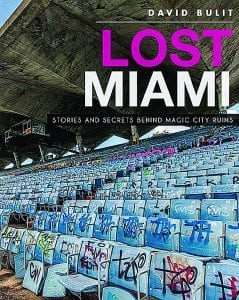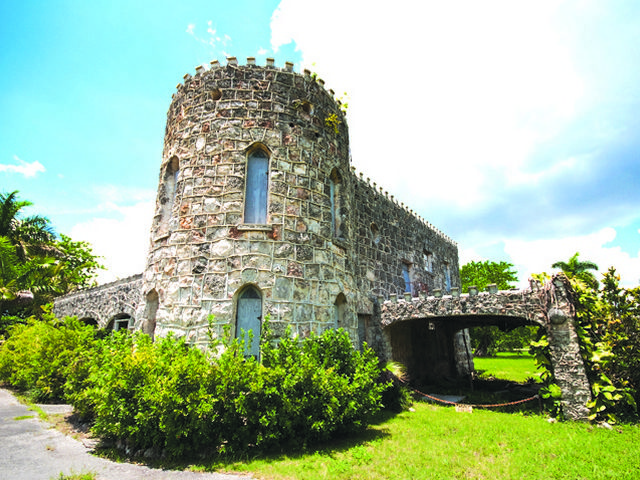
Urban explorer David Bulit tweaks the conscience of a city with his newly published and first authored book, Lost Miami, that carries the provocative subtitle: “Stories and Secrets Behind Magic City Ruins.”
Throughout the 156-page text and spectacular wide-angle photographs, Bulit captures a contemporary look at 14 Miami- Dade locations, some well known and others obscure — all deteriorating images that seem to cry “for shame” for not being saved as part of area history.
“Having lived here my whole life, I’ve seen what growth does and how some people will find every opportunity to erase history and replace it with multimillion dollar condominiums,” Bulit says in his introduction. “Though Miami is known for being a popular vacation destination…there are stories and history here that even people who live in the city probably don’t know.”

Born and raised in Hialeah, Bulit said a documentary film about one of his 14 subjects, the former Aerojet General rocket manufacturing and testing facility off SW 232nd Avenue originally perked his initial interest to photograph the abandoned remains and trace their historic background.
In 1963, the U.S. Air Force provided Aerojet with $3 million funding to construct a manufacturing and testing site several miles southwest of Homestead, less than five miles from Everglades National Park. A facility was constructed where the motors could be built and tested. SW232nd Avenue was renamed “Aerojet Road.”
Mothballed in 1969 when a competitor manufacturer won the first space shuttle booster contract, Aerojet sold off the land it once acquired at $2.50 per acre but the stark remains of its Quality Control Lab stand on the site today, captured by Bulit’s photographs as a hodge-podge of rusting metal and stained concrete.
An inquisitive urban archeological sense also took Bulit along Tamiami Trail to visit Monroe Station, one of six way stations built by Baron Collier on US 41 during the 1920s.
Closed since 1987, a sign still points to the exterior building whose interior is depicted by Bulit’s Nikon 7000 10-20mm wide-angle lens with exposed and broken ceiling timbers and water-ravaged floorboards resulting from Hurricane Wilma’s devastating blows in 2005 and years of neglect. The National Park Service still contemplates its restoration.

Parents whose children listened to a lion’s roar while riding the Zoo Train at Crandon Park on Key Biscayne may be shocked to see rusted “Big Cat” and monkey cages and a weed-filled bird aviary, all left exposed to rust away just footsteps from one of Florida’s most popular beaches and island resorts.
Bulit’s photo essay of the Coconut Grove Playhouse, which he terms “probably the most restorable of all,” displays empty rows of stained seats and a stage floor littered with debris and a sign, “Sonia Flew,” the theater’s final production.
Graffiti-emblazoned concrete arches and chair backs are testament to similar ravages suffered by the Miami Marine Stadium on Rickenbacker Causeway, even as city fathers and private interests stalemated its renewal plan this year. Its unique “floating stage” once featured Gloria Estefan’s Miami Sound Machine; Arthur Fielder to direct Miami’s Symphony Orchestra in a Boston Pops-style concert; Dave Brubeck and sons, and Jimmy Buffet.
Bulit’s efforts “to bring to light the places in and around Miami that have historic value” (like the Grove Playhouse and coral house in the Redland) may still have restoration potential.
“Many more are too far gone to have any chance at being saved,” he regretfully points out. For now, Miamians who peruse Lost Miami ($24.99, The History Press, Charleston, NC, www.historypress.net may be in for a rude shock upon discovering how an uncaring community allows much of its historic past to fade into forgetfulness.






